OCD Interface
To access the OCD add-on's user interface, press N on your keyboard. This will activate the N-panel in Blender where you can find all the controls and settings for the OCD add-on.
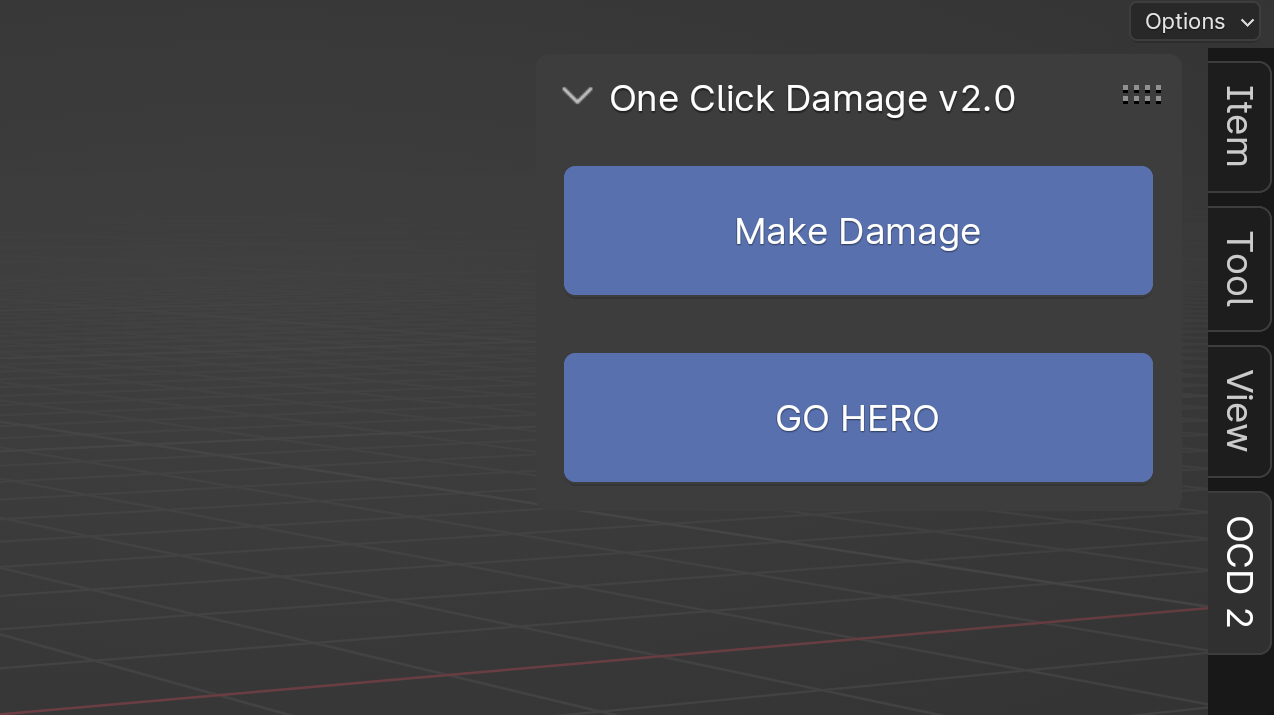
To damage an object using the OCD add-on, select the object and click Make Damage. This will open sliders and a Noise type option to adjust the damage.
Warning
Always press on Apply or Cancel after you are done with the damage settings. Don't remove any objects from OCD_Temp collection manually.
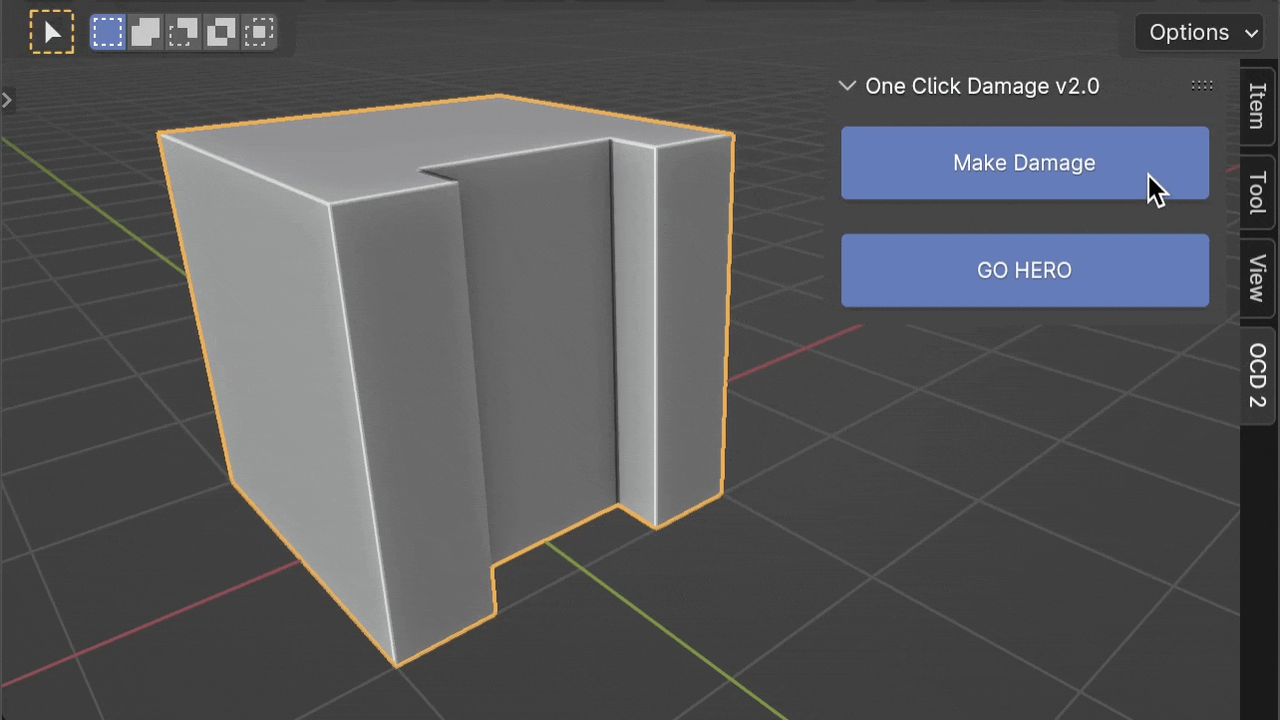
Note
You can hold Ctrl (Command key on MacOS) while clicking the Make Damage button to apply damage instantly using Default or last used settings.
Damage Settings
The Scale slider in the OCD add-on adjusts the noise pattern size for damage. A higher slider value means bigger damage patterns.
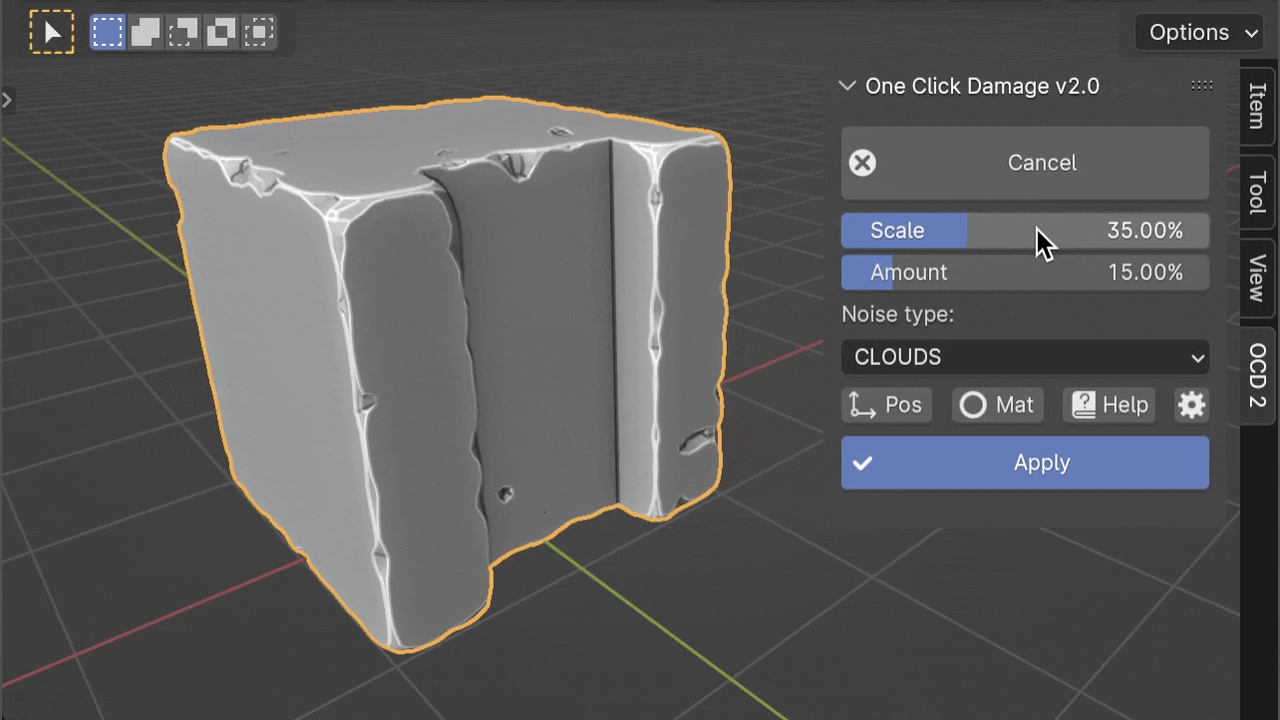
The Amount slider in the OCD add-on determines the damage intensity. A higher slider value means more damage to your object.
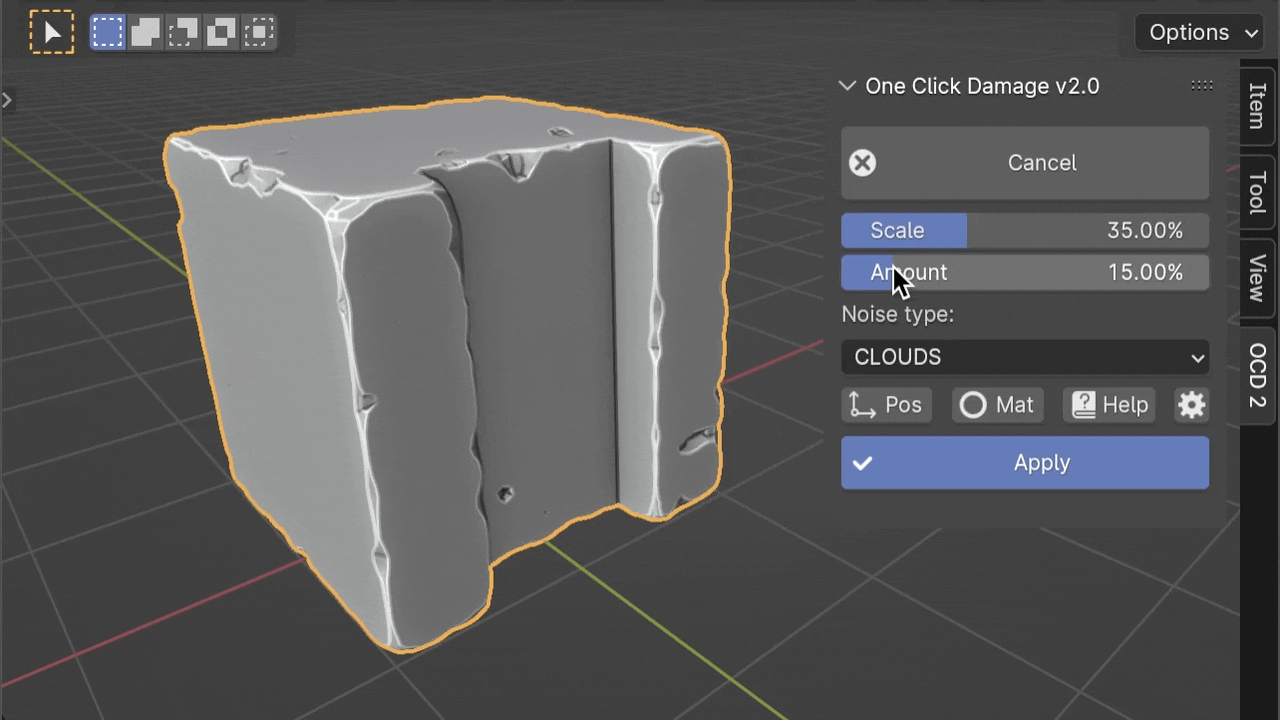
The OCD add-on mimics real-life wear and tear on objects. Increasing the Amount parameter is like aging the object. The higher the value, the older and more rounded it looks, just as it would over time in the real world.
Noise Type
The Noise type field selection in the OCD add-on's interface controls the type of noise pattern used for creating damage. The OCD add-on provides five different noise patterns to choose from: Clouds, Musgrave, Marble, Voronoi, and Wood.
Note
The way noise looks can change based on the Voxel resolution and Damage settings.
Clouds
The Clouds noise pattern is the roughest. It is best used to simulate worn stone (like limestone or sandstone), such as those found in structures from ancient times, like the Roman Empire or Ancient Egypt.
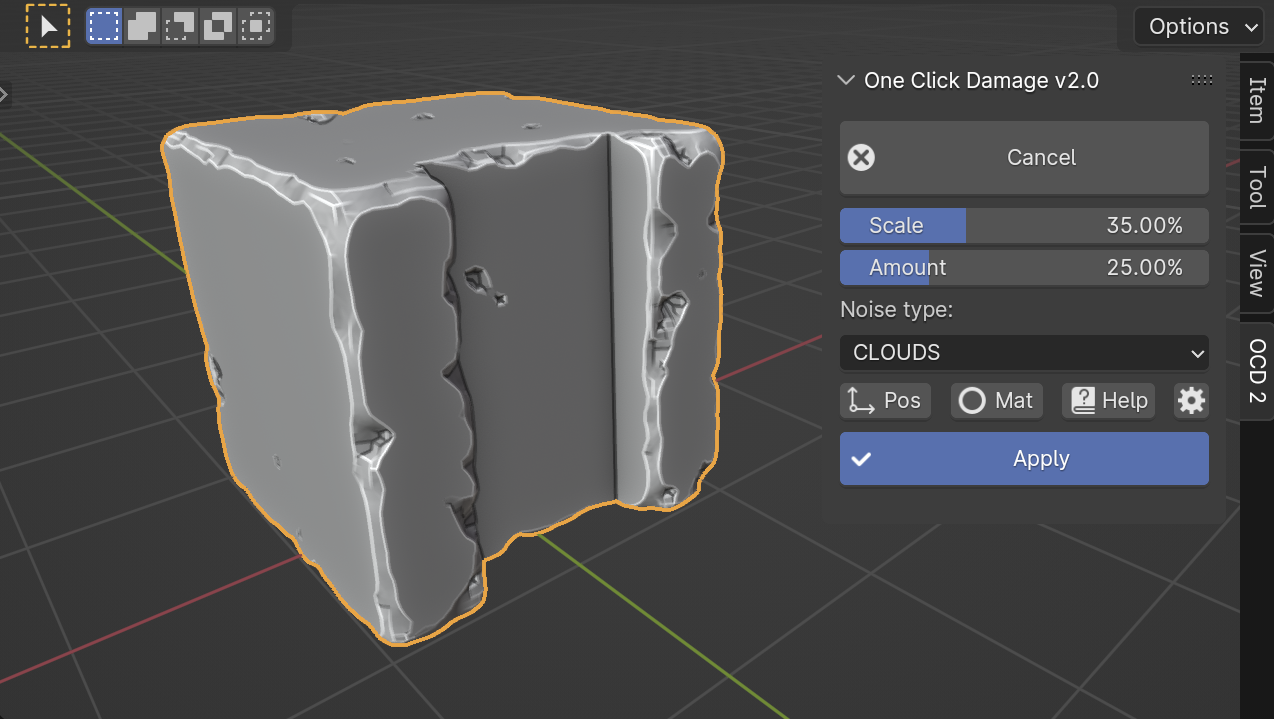
Musgrave
The Musgrave noise pattern is smoother. It is best used to simulate stones from more recent times, such as those found in medieval castles or churches.
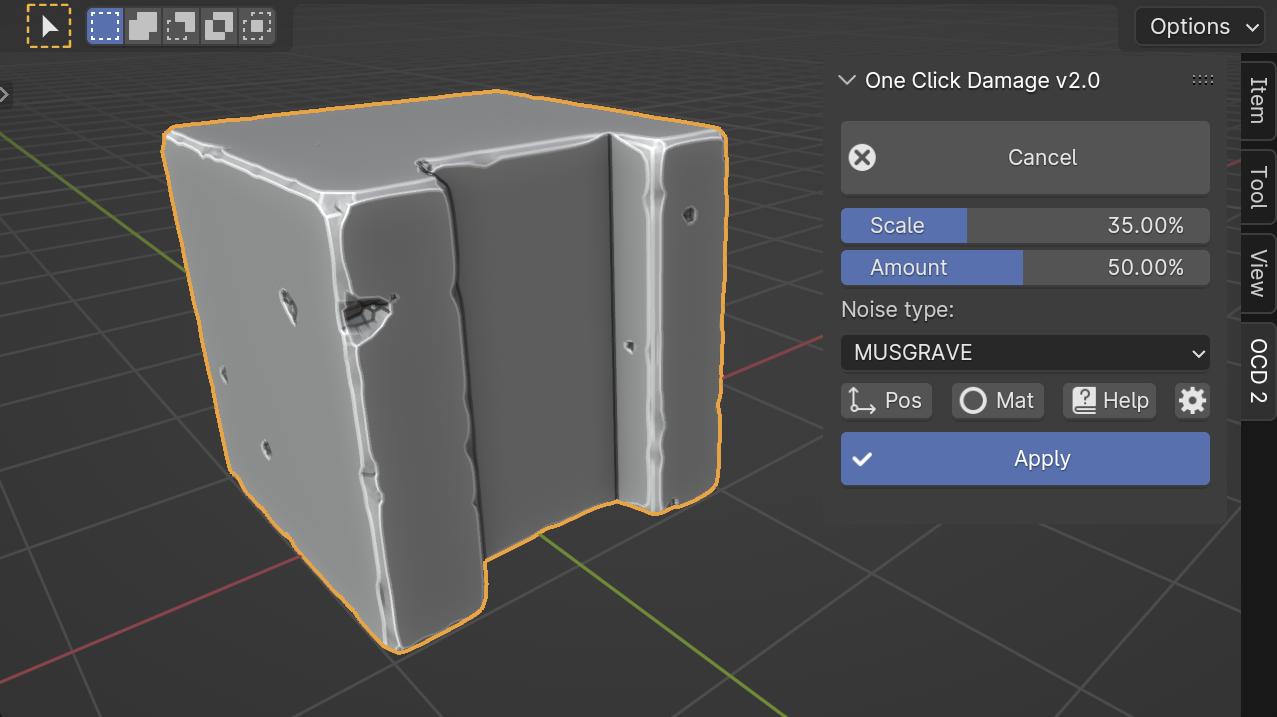
Marble
The Marble noise pattern.
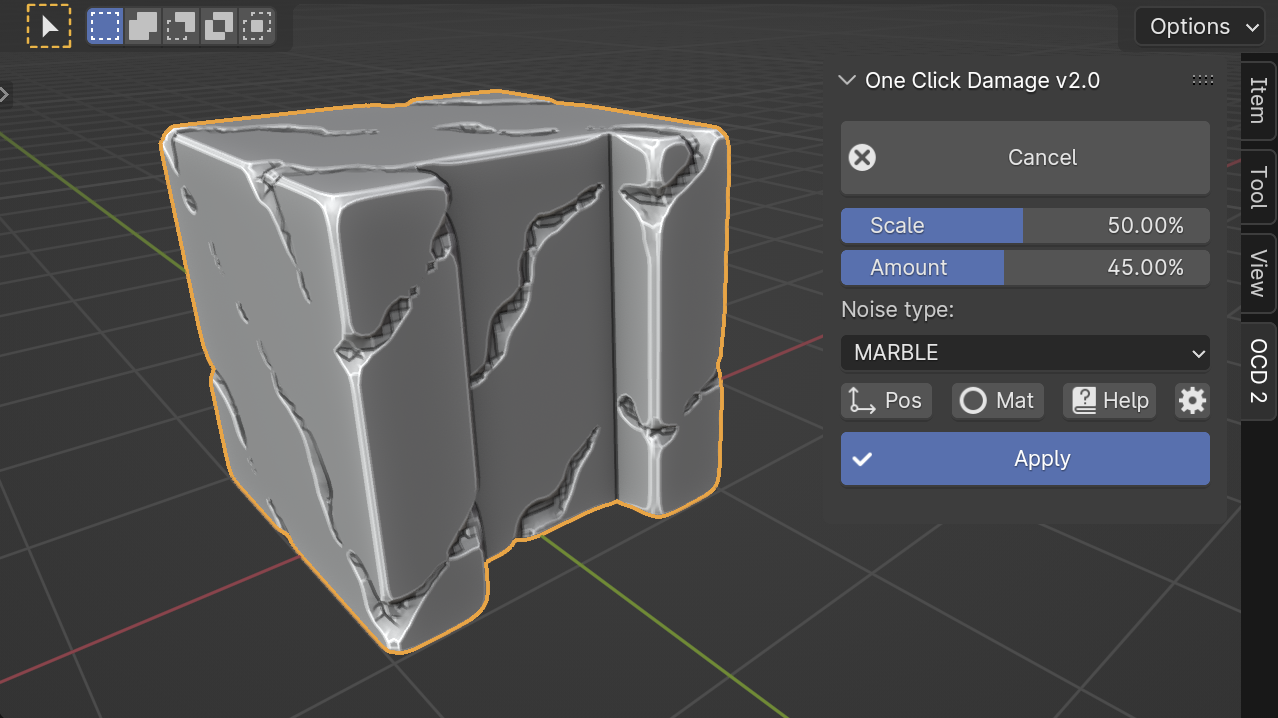
Voronoi
The Voronoi noise pattern is best used when you want to create a more stylized damage effect or primarily affect the edges of an object (with a certain amount of damage).
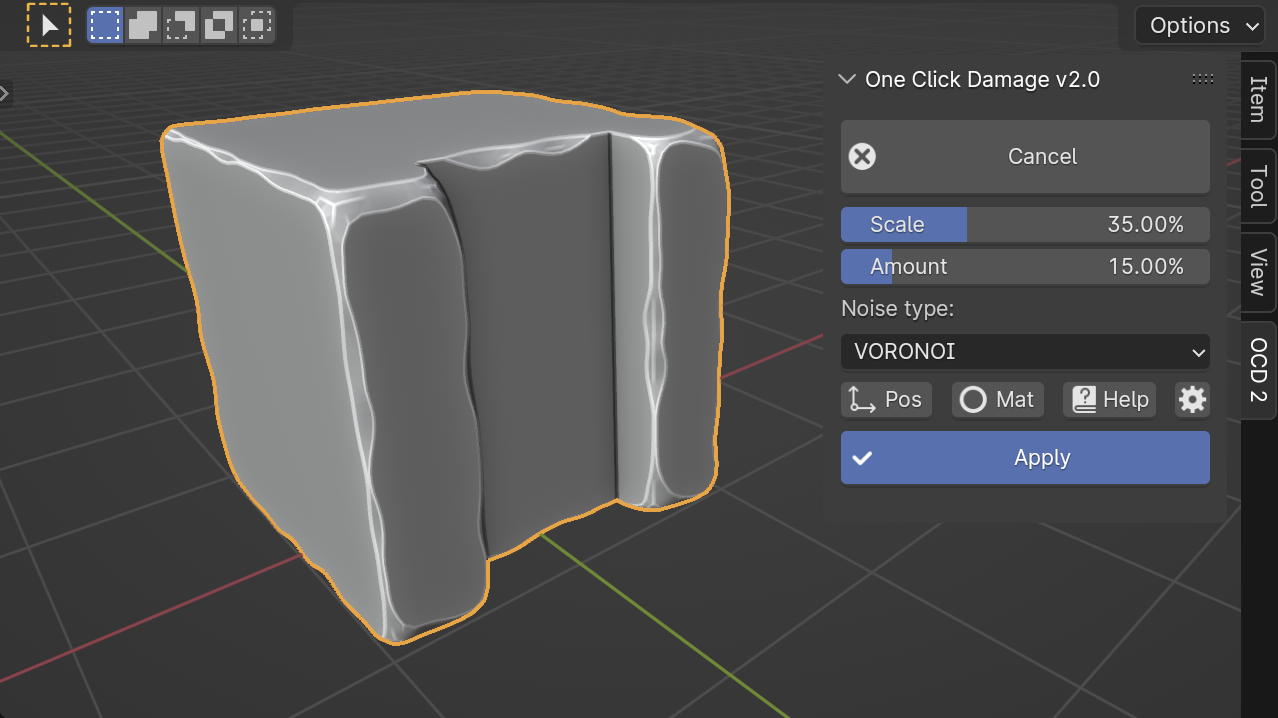
Wood
The Wood noise pattern.
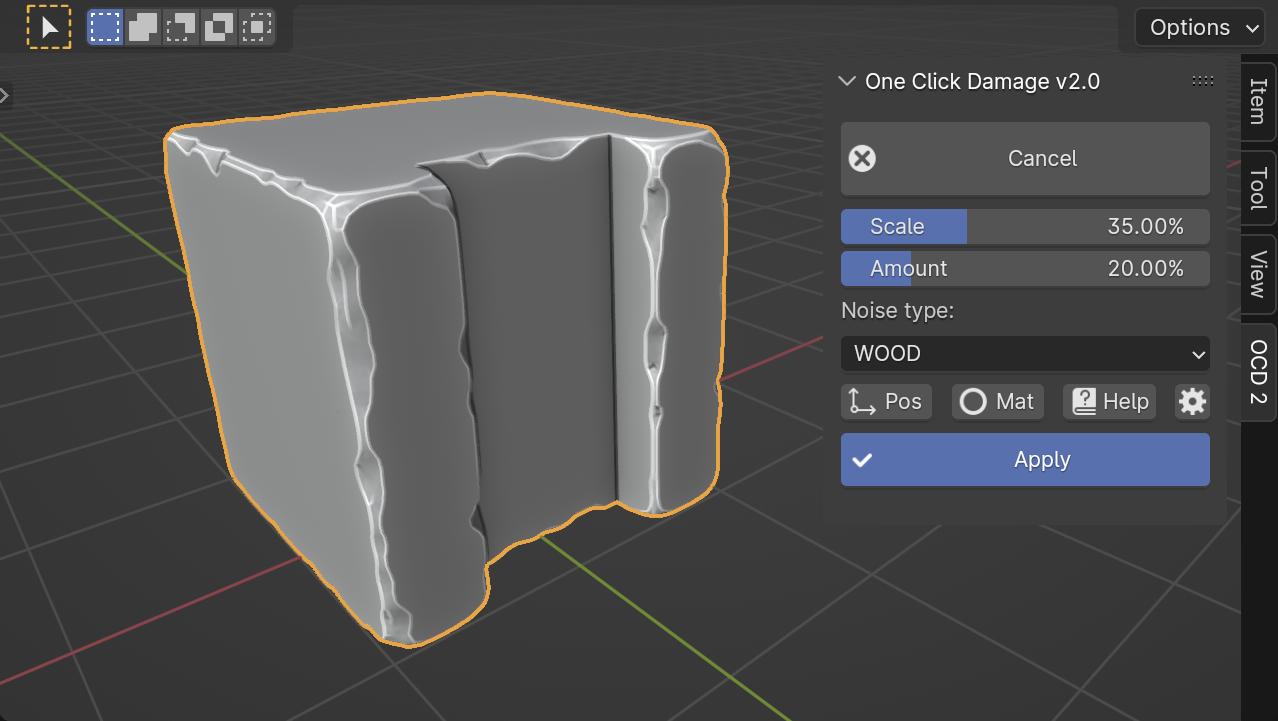
Noise Pattern Shift
The Pos button lets you change the position of the noise pattern just by moving your mouse. This adjustment is based on your current view in Blender. Click the left mouse button to Apply. If you change your mind, right-click to Cancel.
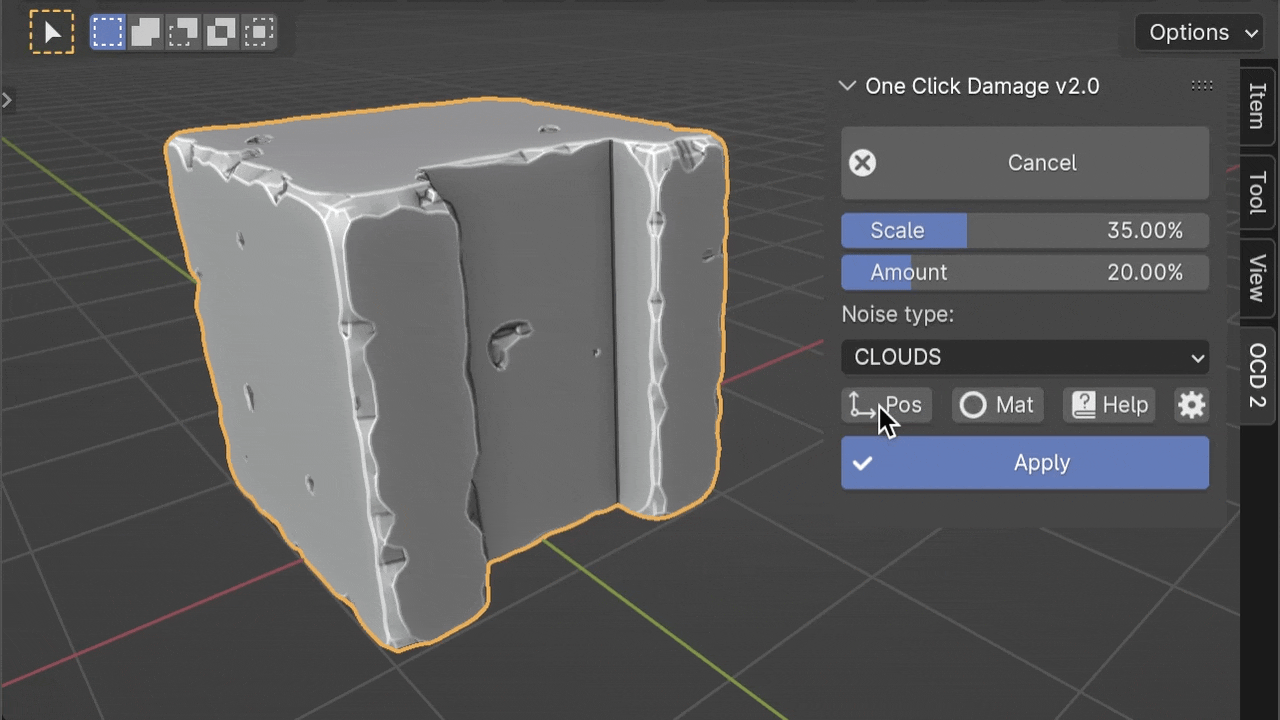
Material Selection
The Mat button in the OCD add-on's interface lets you choose different materials for the Outside and Inside parts of your object directly. You can also set this up in the Preferences section.
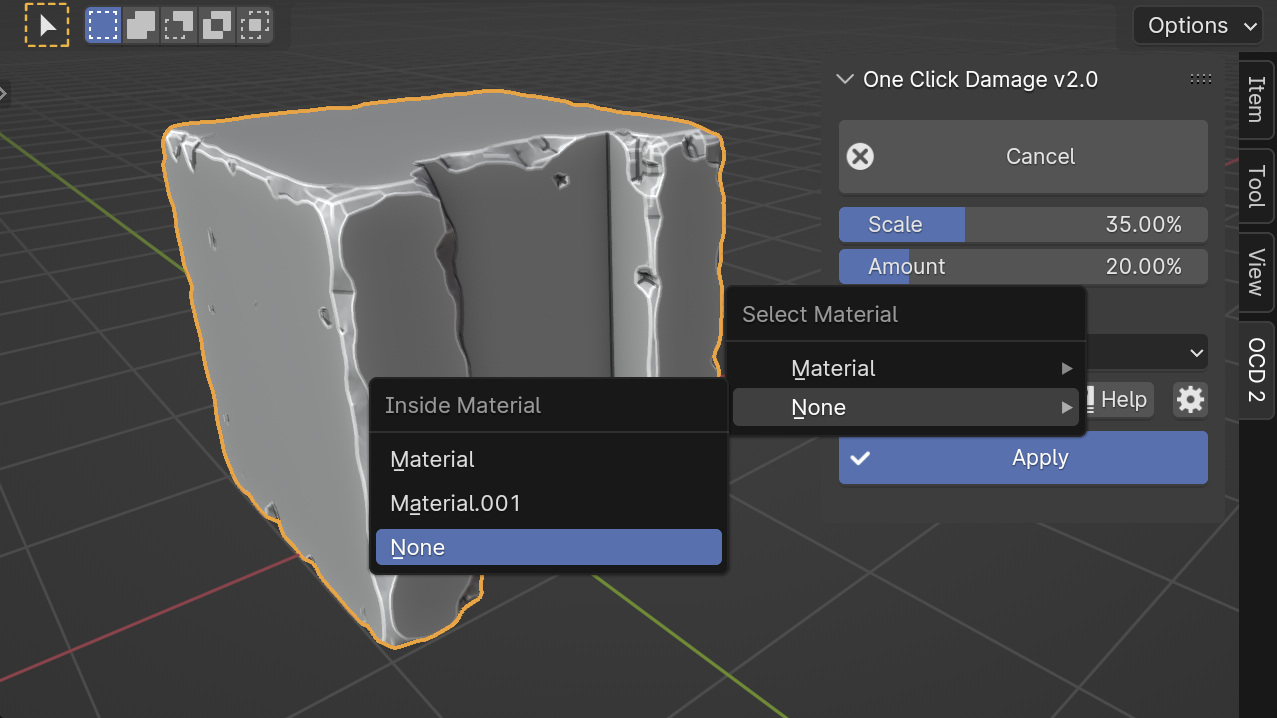
Warning
Remember, you need to create the material first before you can select it.
The Mat button's icon gives you a quick visual clue about your material choice. A hollow circle means either no material has been chosen for the Inside part of your object, or the Inside is using the same material as the Outside.
![]()
If the icon on the Mat button is not a hollow circle, it indicates that two different materials have been selected for the Outside and Inside parts of your object.
![]()